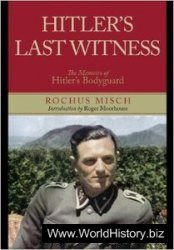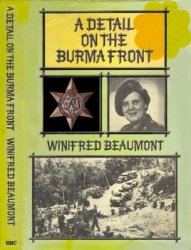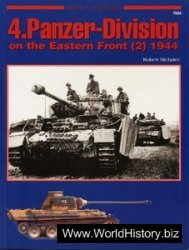Hippikos agon, but never by botli. Although each competition implies the existence of a stadium—however temporary—it is only at Ecbatana that one is expressly mentioned (7.14.1). These competitions also imply the presence in Alexander’s train of professional athletes, musicians, and charioteers; the funeral games for Hephaistion included three thousand such competitors.
The spread of Hellenism and of Greek atliletics in the Near East continued after Alexander, and many new competitions were established in the I-Iellenistic and Roman periods, some modeled expressly on the old Panhellenic festivals at Olympia, Delphi, Nemea, and Isthmia. The terms isolympic, isopythian, and isonemean are frequently used to describe the age categories and victory prizes for these new games. It is then natural to find that stadiums are extant throughout tlie Near East, at sites like Adana, Cibyra, and Marathos, and at Salamis on Cyprus. It is also natural that these stadiums are concentrated in areas where there was a relatively strong Hellenic influence. For some sites, such as Alexandria in Egypt and Tiberias in ancient Palestine, although the existence of a stadium is stated in the literary sources, one has not been identified on the ground.
Archaeological investigation has been sufficient at some sites to suggest that no stadium ever existed. Thus, for example, the Sebasteia games established by King Herod at Caesarea in 10/9 bce demand tire existence of a stadium, but no traces of it have ever been identified. This and similar examples have led to tlie assumption tliat at such sites the hippodrome, or circus, might have hosted both the hippikos and the gymnikos agon. This theory has led to confusion: today the word stadium is sometimes casually applied to hippodromes, as if the two words were interchangeable, as at Gerasa and Samaria. The confusion is not ancient.
Alternatively it has been suggested that the gymnikos agon of the Augustan/Claudian Olympic games at Antioch on tlie Orontes might actually have been hosted in a stadium at nearby Daphne because no trace of a stadium has been discovered at Antioch itself. This may also have been tlie case elsewhere: Josephus consistently and uniquely refers to a stadium at Tiberias (War 2.618; Life 92.2 and 331.2), but equally consistently to a hippodrome at Tarichaeae (War 2.599; Idfe 132 and 138) some 5 Ion (3 mi.) to the north. These two structures could easily have served as parts of a single competition complex.
Once established, a stadium might be used for popular assemblies, frequently of a disruptive type. For example, Josephus was attacked by the crowd in die stadium at Tiberias (loc. cit.), and the stadium at Alexandria was the site of violent anti-Agathoclean demonstrations (Polybius 15.30-33). Such use of the stadium apparently was unusual, however.
According to ancient sources, the stadium was never used for physical exercise. Such a function belonged in the palaestra-gymnasium, where education in general—physical and intellectual—and tlie ephebic training that led to citizenship in the Greek polis took place. It is that training for Greek citizenship to which Maccabees (1.1.14; 2.4.9-14) refers, and not to any connection with the stadium. Maccabees is clear on this point (as is Josephus, Antiq. 12.241), even though modern translations have sometimes confused die gymnasium with the stadium.
BIBLIOGRAPHY
Aupert, Pierre. Fouilles de Delphes, vol. 2, Lc stadc. Paris, 1979. Detailed presentation of tlie stadium at Delphi, with an appended extensive, but incomplete, list of stadiums in tlie whole of the ancient world including tlie Near East.
Humphrey, John H. Roman Circuses. London, 1986. Thorough study of the form and function of the circus, and of its places of appearance throughout the Roman world.
Romano, David Gilman, and Stephen G. Miller. Nemea, vol. 2, The Stadium. Berkeley, 1996. Detailed presentation of the remains of the stadium at Nemea compared to other extant examples with a discussion of the significance of the addition of stone seats, vaulted entrance, and locker room for understanding the role of atliletics against the background of ancient societies.
Valavanis, Panos D. Hysplex, The Starting Mechanism in Ancient Stadia. Athens, 1996. Study of the origins and development of the starting device used in Greek stadia in Greece and the Near East during the late Classical and Hellenistic periods.
Stephen G. Miller
STANHOPE, HESTER LUCY (1776-1839), English adventurer and antiquarian. Though often maligned as an eccentric. Lady Hester Stanhope was, arguably, the first modern archaeological excavator in Palestine. Her brief sounding at Ashkelon in 1815 may have revealed only one significant structure, but her implicit understanding of architectural stratigraphy represented a significant advance over the previous attempts of European ttavelers and pilgrims to uncover isolated artifacts and monuments.
Born in Chevening, Kent, tlie granddaughter of the Earl of Chatltam, William Pitt the Elder, Stanhope was educated at home and spent three years (1803-1806) as the official hostess and confidante of her uncle, Prime Minister William Pitt the Younger. With Pitt’s deatlr, she set off for a life of travel and adventure in the Mediterranean region. In the era of the Grand Tour, Lady Hester’s entourage was among the grandest. Accompanied by her personal physician Charles Meryon and a coterie of friends and proteges, she and her companions survived a shipwreck off the island of Rhodes to reach Jerusalem and eventually travel to the isolated ruins of Palmyra, where she was received with great ceremony by the sheikhs of the local bedouin tribes. In 1814, she established residence in the Lebanese village of Junieh, where she lived for the rest of her fife.
Stanhope’s archaeological career began mysteriously witli her acquisition of a medieval document that reportedly described tlie location of a great treasure in the ruins of an ancient mosque at Ashkelon. Believing the document’s description to be authentic, Stanhope contacted the Ottoman authorities and, together with Meryon and an Ottoman official dispatched from Istanbul, proceeded southward at tire head of an expedition to retrieve tlie treasure. The site of ancient Aslikelon, Tell el-Khadra, had been severely dis-mrbed since medieval times by stone robbing, yet Stanhope and Meryon identified a ruined building on tlie summit as a mosque—basing tlteir identification on tire apsidal mihrab, or prayer niche, on its southern end.
In their subsequent excavations of this structure. Stanhope and Meryon distinguished several stratigraphic levels. While European excavators in other parts of the Mediterranean were, in this period, principally concerned with the quantity and artistic quality of the statuary and architecmral elements they uncovered. Stanhope and Meryon noted the apparent transformation of the structure from pagan, to Christian, to Muslim use.
In the course of her excavations. Stanhope’s workers uncovered a larger-than-life-sized Roman imperial statue. Yet, she insisted that they destroy it, lest they be accused by the accompanying Ottoman official of merely seeking the treasure or works of art for themselves. It was this apparent act of archaeological destruction that has traditionally (and negatively) colored the scholarly estimation of Stanhope’s activities at Ashkelon.
With no sign of the reported treasure. Stanhope returned with her expedition northward along the Mediterranean coast. Stopping briefly at the Yarkon River (where Meryon noted the antiquarian importance of the site of Tell Qasile), Stanhope returned to Junieh. In later years, she was frequently visited by European explorers, but it would be decades before the precocious stratigraphic insights of the 1815 expedition to Ashkelon would be applied at other sites.
[See also Ashkelon.]
BIBLIOGRAPHY
Hamel, Frank. Lady Hester Lucy Stanhope: A New Light on Her Life and Love Affairs. London, 1913.
Silberman, Neil Asher. “Restoring the Reputation of Lady Hester Lucy Stanhope.” Biblical Archaeology Review 10.4 (1984); 68-75. Stanhope, Hester Lucy, and Charles Lewis Meryon. The Travels of Lady Hester Stanhope. London, 1846.
Neil Asher Silberman
STARCKY, JEAN (1909-1988), French priest and epigrapher. Following his studies at the ficole Pratique des Hautes Etudes in Paris, tlie Institut Gatholique de Paris, the Pontificium Institutum Biblicum in Rome, and the ficole Biblique et Archeologique Franqaise in Jerusalem, Starcky taught at tlte Universite Saint Joseph in Beirut. From 1941 to 1945, he served as chaplain in the Free French Forces under Charles de Gaulle. After the war he took up residence as fellow at tlte Institut Franqais d’Archeologie de Beyrouth (1946-1949). In 1949 he became associated with the Centre National de la Recherche Scientifique; he ended his career there as director of research in 1978. Urged by Henri Seyrig, then director of the institute, to study Palmyrene epigraphy, Starcky contributed the article “Palmyre” to the Supplement du Dictionnaire de la Bible (Paris, 1964, cols. 1066-1103). In addition to his work in archaeology, he maintained an interest in biblical studies: he participated in the translation and commentary of i and 2 Maccabees (Paris, 1948) and on a more extensive separate publication with Felix-Marie Abel (Paris, 1961), and was a member of the publication team for the Dead Sea Scrolls. Much of his time in Jerusalem was devoted to studying Nabatean epigraphy. He became the leading specialist in this field, and the publication of “Petra etla Nabatene” (Paris, 1964, cols. 886-1017) contributed to his authority in the field. He collaborated with Andre Du-pont-Sommer in studying Aramaic inscriptions (Paris,
1958). His participation in the establishment of the Musee Biblique de I’lnstitut Catholique, of Bible et Terre Sainte (later Le Monde de la Bible), and of numerous public conferences allowed him to reconcile his scholarly pursuits witlr his desire for conversation witlt the wider world. He viewed the latter as an essential facet of his pastoral vocation.
[5ee also Ecole Biblique et Archeologique Franqaise; Nabatean Inscriptions; Palmyrene Inscriptions; and the biographies of Abel and Seyrigi
BIBLIOGRAPHY
Abel, Felix-Marie, and Jean Starcky. Les livres des Maccabees. 3d ed. Paris, 1961.
Israel, Felice. “In memoriam: L’Abbe Jean Starcky.” Orientalia 38 (1989): 333-334-
Puech, fimile. “L’Abbe Jean Starcky, 1909-1988.” Revue de Qumran 15 (1991): 1-20. Includes a bibliography of Starcky’s works (pp. ii-20).
Starcky, Jean. La Sainte Bible de Jerusalem. Paris, 1948.
Starcky, Jean, ed. Inventaire des inscriptions de Palmyre. Beirut, 1949. Starcky, Jean, and Andre Dupont-Sommer. Les inscriptions arameennes de Sfire, steles I et II. Paris, 1958.
Starcky, Jean. “Palmyre.” In Supplement du Dictionnaire de la Bible, vol. 7, cols. 1066-1103. Paris, 1964.
Starcky, Jean. “Petra et la Nabatene.” In Supplement du Dictionnaire de la Bible, vol. 7, cols. 886-1017. Paris, 1964.
Zayadine, Fawzi. “In Memoriam: Father Jean Starcky, 1909-1988.” Annual of the Department of Antiquities of Jordan 32 (1988): 9—11. See also “A Selected Bibliography of Jean Starcky” (pp. 12-14).
Pierre Bordreuil Translated from French by Melissa Kaprelian
STARKEY, JAMES L. (1895-1938), archaeologist born in London, whose interest in archaeology was initially aroused by his worldng, at the age of fifteen for an antiquities dealer. During World War I Starkey served in the Royal Naval Air Service; during a lengthy posting in a lighthouse off the English coast, he studied archaeological textbooks. After the war he attended Margaret Murray’s evening classes in Egyptology at University College in London, where he met Sir Flinders Petrie. Soon after, he went to Egypt to work with Petrie and Guy Brunton on their excavations in the Qau-Badari distinct. He later became field director of the University of Michigan (Ann Arbor) excavations at Kom Washim in the Faiyum area. In 1926, Starkey followed Peti'ie to soutliern Palestine and worked with him for a number of years excavating at Tell Jemmeh, Tell el-Far'ah (North), and Tell el - ‘Ajjul. [See Jemmeh, Tell; Far‘ah, Tell el - (North); ‘Ajjul, Tell el-; and the biography of Petrie.]
In 1932, following personal rifts witli Petrie’s wife, who had an active role in administering her husband’s expeditions, Starkey decided to initiate his own excavation. Together with other members of Petrie’s staff, primarily Olga Tufnell and G. Lankester Harding, he left the Tell el-‘Ajjul dig and began excavating at Tel Lachish (Tell ed-Duweir). [See Lachish; and the biographies of Tufnell and Harding.] Generous support from two British donors, Charles Mar-ston and Henry Wellcome, who were interested in the biblical context of Lachish, enabled Starkey to develop one of the most ambitious and best-organized archaeological expeditions of the period in Palestine. The excavations at Lachish continued annually for six years. They abruptly terminated when Starkey was murdered by Arab bandits on 10 January 1938, as he travelled to Jerusalem for the opening ceremonies of the Palestine Archaeological Museum (today the Rockefeller Museum).
Starkey had been Petrie’s student, after all, and at Lachish he followed his methods and concepts: the digging was done on a large scale but witli insufficient attention paid to details and their recording. Starkey followed the “horizontal” or “architectural” method of excavation in order to uncover complete architectural units or horizontal layers but paid little attention to the site’s vertical dimension. He was, however, a skilled administrator, and tire expedition, witli its small staff and large work force of hired Arab laborers, remained in the field for about half of each year.
Important remains of the ancient city and nearby cemeteries were uncovered. Starkey’s best-known discovery is the corpus of Hebrew ostraca known as the Lachish letters. [S'ee Lachish Inscriptions.] Testimony to die sound work carried out by Starkey and his team at Lachish is the fact that few of their stratigraphic conclusions and observations have been altered as a result of subsequent excavations at tire site.
BIBLIOGRAPHY
Tufnell, Olga. “James Leslie Starkey; An Appreciation.” Palestine Exploration Quarterly 36 (1938): 80-83.
Tufnell, Olga. “Reminiscences of a ‘Petrie Pup.’ ” Palestine Exploration
Quarterly 114 (1982); 81-86.
David Ussishkin




 World History
World History









